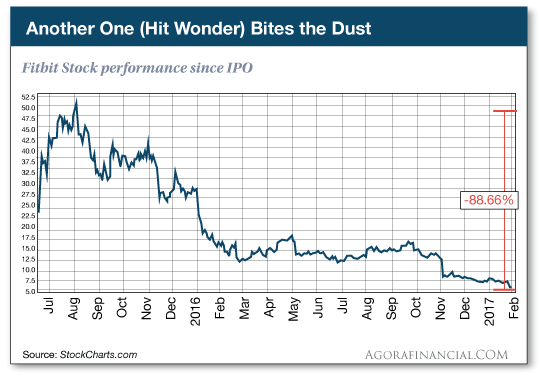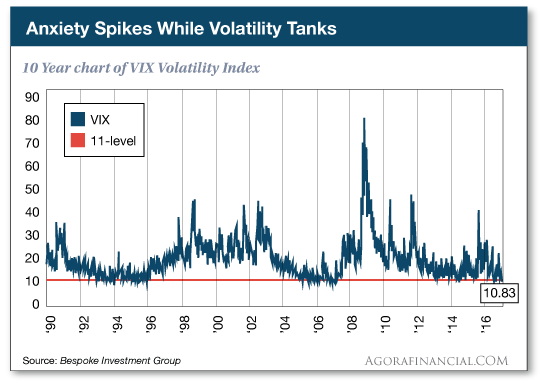If you missed our announcement last week, you’re in for a treat today.
Every Friday, we’re ditching the longwinded analysis in exchange for several carefully selected charts to sum up the week’s most important market-moving events.
After all, a picture is supposed to be worth a thousand words, right?
This week, all three charts underscore why it pays to be a contrarian. Take heed!
Apple Resurrects the Dead
For months, we endured an endless drumbeat of death pronouncements for the most iconic consumer electronic device in history — the iPhone.
During this period, I told True Alpha readers to buck the dire warnings and scoop up long-dated options in Apple Inc. (NASDAQ:AAPL). And now they’re glad they did, as the reports of the iPhone’s death proved wildly exaggerated.
On Tuesday, the company revealed it sold 78.3 million iPhones in the holiday quarter. That topped analysts’ expectations for 76 million and the company’s record of 74.8 million.
I was fortunate enough to join CNBC’s Closing Bell to provide instant reactions to the results.
The main takeaway? It’s all about the iPhone… and iPhone sales growth has been resurrected. Hallelujah!

Of course, the better-than-expected results led 10 analysts to raise their price targets, which in turn reinvigorated bulls, who promptly bid up shares to a new 52-week high.
And now True Alpha readers are sitting on a 43% gain in their options. Proof positive that being a contrarian pays.
Another One-Hit Wonder Bites the Dust
While Apple’s riding high, another tech company’s hitting fresh lows — Fitbit Inc (NYSE:FIT).
Why? Because no one really needs a(nother) Fitbit. Or more specifically, holiday sales came up short of expectations, which forced the company to slash guidance and its workforce by 6%.
“To address this reduction in growth and what we believe is a temporary slowdown and transition period, we are taking clear steps to reduce operating costs,” said CEO James Park.
“Temporary slowdown”? Clearly, he’s in denial.
Just like GoPro Inc (NASDAQ:GPRO) before it, Fitbit’s business and stock are trapped in the one-hit wonder death spiral. The stock’s down a staggering 89% from its IPO peak.

Don’t say I didn’t warn you, though.
I’ve been railing against the stock ever since it began trading. And I kept up the warnings even when analysts, particularly SunTrust’s Bob Peck, were continually pounding the table for investors to “buy the dips.”
Even after the precipitous fall, I still wouldn’t remotely recommend buying the stock. Hint: You shouldn’t either!
Who, Me? Nervous?
Consider this the most unexpected outcome of the presidential election: While political anxiety is spiking, volatility has all but disappeared.
In the last week, the VIX volatility index dropped to its lowest level since 2014.

Even more amazing, as Bespoke Investment Group points out, since Donald Trump won the election, the VIX hasn’t closed above 15. That’s almost 60 days (and counting).
As a frame of reference, any VIX reading below 20 used to be considered low.
So what happens when volatility dies? Simple — stocks rise.
Bespoke found that in the six months following a period of at least 50 days with a VIX reading below 15, the S&P 500 averaged a gain of 4.1%, with positive returns eight out of 10 times.
If we go one year out, the S&P 500 averaged a gain of 10.5% with — get this! — positive returns nine out of 10 times.
Translation: While you might be anxious politically, don’t let that unduly influence your investing decisions. As contrarian as it might sound, the data point to higher prices ahead.
